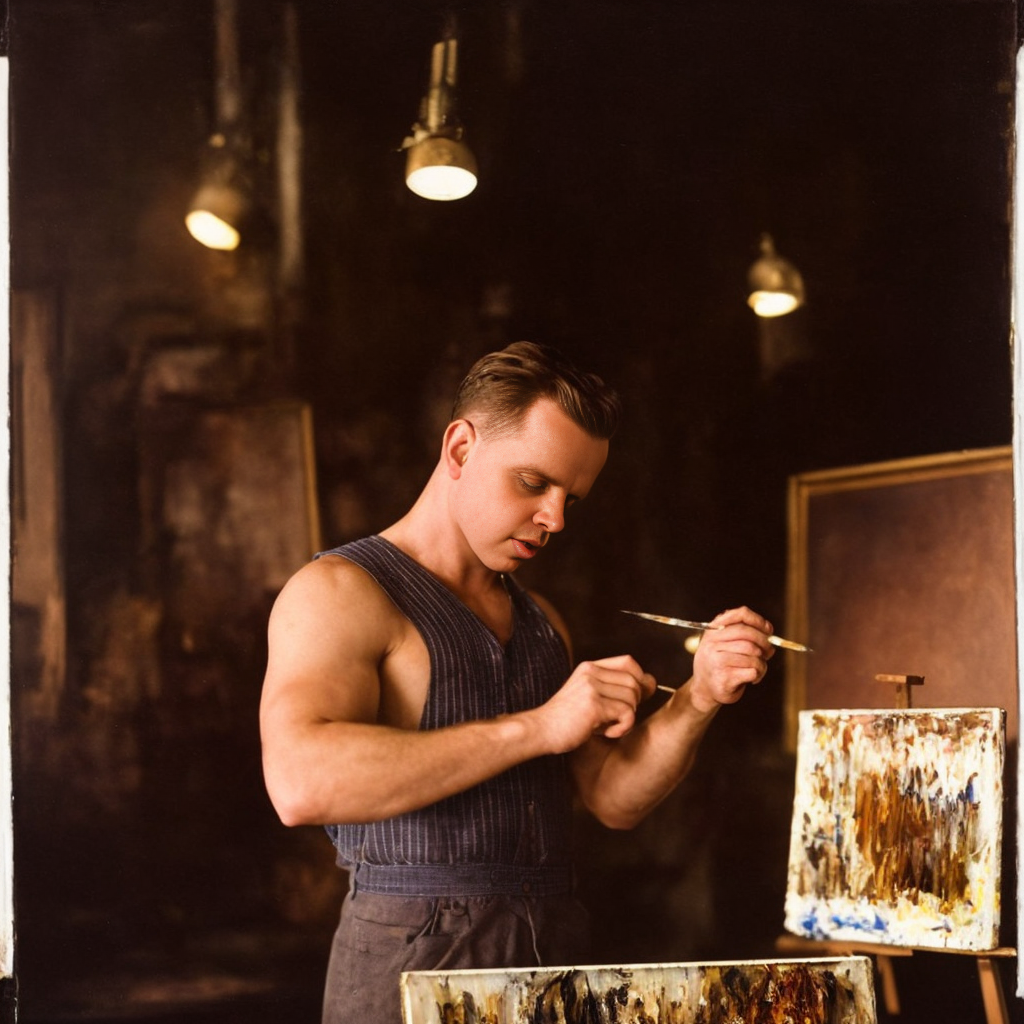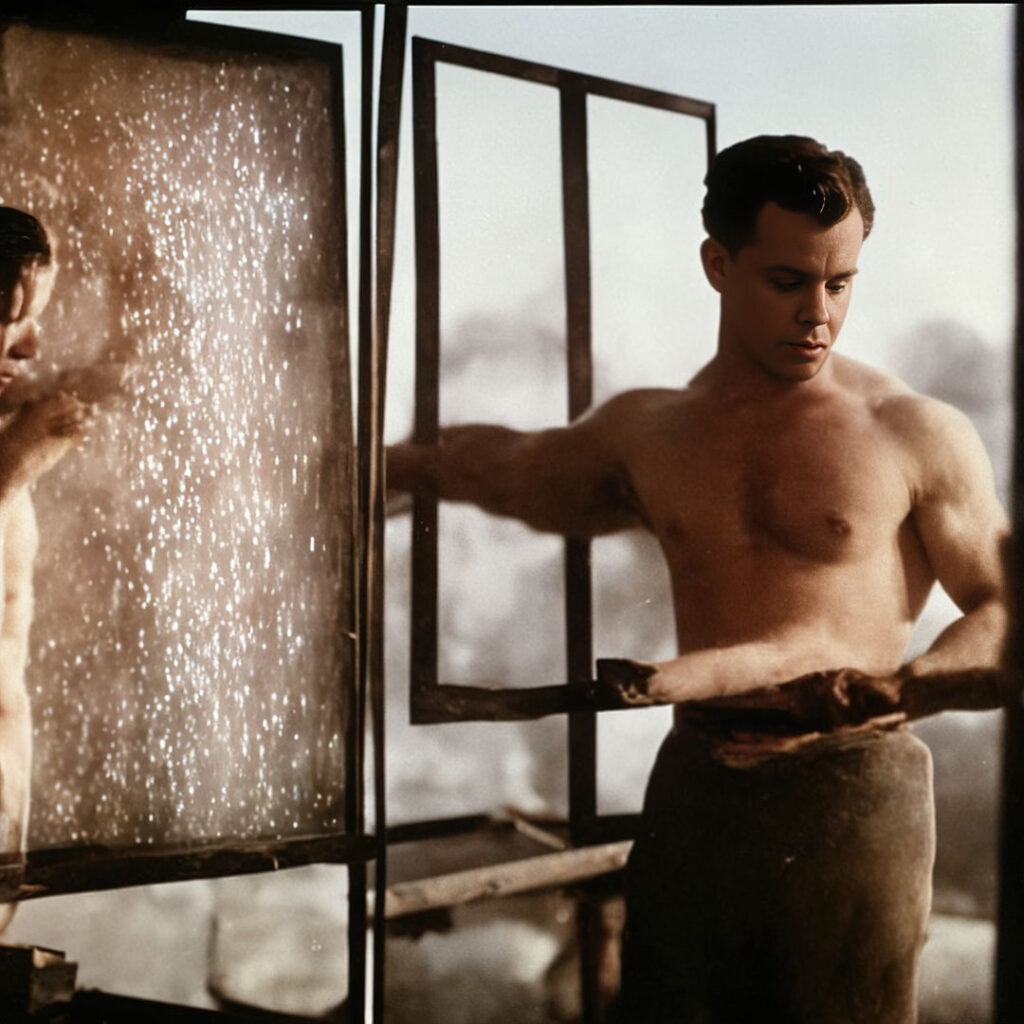De l’obsolescence de l’AIart / On the obsolescence of the AIart

On peut s’interroger sur l’obsolescence rapide des travaux utilisant des réseaux récursifs de neurones. En effet, au premier abord l’évolution de ces technologies est si rapide et si profonde qu’elle semble affecter la qualité des images et des textes produits avec des technologies passées. Ainsi d’année en année, de mois en mois, on voit de nouvelles versions des logiciels apparaître et faire évoluer par exemple les images vers un photoréalisme confondant.
Quelle qualité accorder alors aux images d’il y a à peine 2 ans qui était de facture beaucoup plus surréaliste et psychédélique si ce n’est d’être la trace de technologies obsolètes ? Il me semble qu’en ce domaine il faut distinguer deux types de pratique. La première fait usage de l’intelligence artificielle dans une relation de fascination qui suit les évolutions techniques et qui donc de ce fait même, du fait du caractère instrumental de sa démarche, devient aussi obsolète que les technologies utilisées parce qu’elles n’en sont que les démonstrations.
De l’autre, des pratiques artistiques qui utilisent les réseaux récursifs de neurones pour se référer à ceux-ci non comme une technologie ayant une valeur d’usage, mais comme un paradigme ontique permettant d’approcher une diversité de phénomènes et de les relier les uns aux autres. Ces pratiques ne deviennent pas obsolètes de la même manière que les technologies qu’elles utilisent parce qu’elles documentent réflexivement un monde.
On peut remarquer que l’un des éléments qui distinguent ces deux types d’approche c’est d’un côté un usage monomédiatique de l’intelligence artificielle : par exemple seulement des images. Et de l’autre côté, une approche installative qui relie les images à des sons, à des textes, à d’autres œuvre, à des éléments technologiques et non-technologiques parce que dans ce second cas l’imagination se répand de proche en proche sur la totalité de la réalité. On peut proposer que cette seconde catégorie concerne l’espace latent comme paradigme.
Je place dans cette seconde catégorie les œuvres d’art comme celle de Trevor Paglen, Hito Steyerl, Pierre Huyghe, Giraud et Siboni, etc. Il est important de remarquer que l’usage des réseaux récursifs de neurones dans l’art contemporain a souvent précédé son usage dans le champ des arts numériques, c’est-à-dire que l’usage dans la catégorie 2 a été antérieur à l’usage dans la catégorie 1. Quand on observe des images de Huyghe, le caractère bruité de l’image et son imperfection instrumentale n’exprime pas une obsolescence, mais est investi d’une signification extra-instrumentale : le bruit du monde, l’émergence troublée d’une morphogenèse qui est en bordure de la technique.
Il serait donc superficiel et inexact de penser que dans quelques années toutes les œuvres sembleront obsolètes parce que les technologies auront entretemps évoluées et que les images sembleront primitives . Ce serait là une conception instrumentale de la relation à l’image et ce serait par exemple dire que l’entrée en gare de La Ciotat est obsolète parce que maintenant nous avons l’Imax, ce qui est bien sûr inexact car l’histoire des technologies n’est pas une chronologie linéaire, mais, en tant que leur développement est constitutif de la construction historique elle-même, une sédimentation complexe que l’archéologue des médias est à même de décrypter.
On peut dès lors distinguer les usages de l’intelligence artificielle dans l’art contemporain et les usages dans l’illustration, la créativité, le design ou ces pratiques instrumentales. Il va de soi qu’il y a là quelque chose qui ressemble à la distinction classique entre les arts libéraux et mécaniques, mais ce n’est pas dans le rapport à l’idéalité que la différence se joue comme c’était le cas, c’est dans la relation même à la question de l’instrumentalité anthropologique de la technique et dans la manière dont la technique est considérée soit comme un monde séparé sur un écran soit comme un monde qui est mis en relation et qui irrigue, qui nourrit la totalité du monde en tant que conception. En ce sens, les pratiques en art contemporain ne deviennent pas obsolètes selon l’évolution des technologies, mais sont la trace d’un monde sans doute disparu, ou en train de disparaître, mais qui comme trace témoigne d’une époque historique, du caractère arbitraire de sa construction et surdéterminé.

One can wonder about the rapid obsolescence of works using recursive neural networks. Indeed, at first sight the evolution of these technologies is so fast and so deep that it seems to affect the quality of images and texts produced with past technologies. Thus from year to year, from month to month, we see new versions of software appearing and making images evolve towards a confusing photorealism.
What quality should be given to the images of only 2 years ago, which were much more surreal and psychedelic, if not to be the trace of obsolete technologies? It seems to me that in this field we must distinguish two types of practice. The first one makes use of the artificial intelligence in a relation of fascination which follows the technical evolutions and which therefore of this very fact, because of the instrumental character of its step, becomes as obsolete as the used technologies because they are only the demonstrations of it.
On the other hand, artistic practices that use recursive neural networks to refer to them not as a technology with a use value, but as an ontic paradigm allowing to approach a diversity of phenomena and to link them to each other. These practices do not become obsolete in the same way as the technologies they use because they reflexively document a world.
We can notice that one of the elements that distinguish these two types of approach is, on the one hand, a monomedia use of artificial intelligence: for example only images. And on the other hand, an installative approach that links images to sounds, texts, other works, technological and non-technological elements because in this second case the imagination spreads from one to the other on the totality of reality. We can propose that this second category concerns the latent space as paradigm.
I place in this second category the works of art like that of Trevor Paglen, Hito Steyerl, Pierre Huyghe, Giraud and Siboni, etc. It is important to note that the use of recursive neural networks in contemporary art has often preceded its use in the field of digital art, i.e. the use in category 2 has been prior to the use in category 1. When we observe Huyghe’s images, the noisiness of the image and its instrumental imperfection does not express an obsolescence, but is invested with an extra-instrumental meaning: the noise of the world, the troubled emergence of a morphogenesis that is on the edge of the technique.
It would be thus superficial and inaccurate to think that in a few years all the works will seem obsolete because the technologies will have meanwhile evolved and that the images will seem primitive. It would be there an instrumental conception of the relation to the image and it would be for example to say that the entrance in station of La Ciotat is obsolete because now we have the Imax, what is of course inaccurate because the history of the technologies is not a linear chronology, but, as their development is constitutive of the historical construction itself, a complex sedimentation that the archaeologist of the media is able to decrypt.
One can consequently distinguish the uses of the artificial intelligence in the contemporary art and the uses in the illustration, the creativity, the design or these instrumental practices. It goes without saying that there is something there which resembles the classic distinction between the liberal and mechanical arts, but it is not in the relation to the ideality that the difference is played as it was the case, it is in the relation itself to the question of the anthropological instrumentality of the technique and in the way in which the technique is considered either as a separate world on a screen or as a world which is put in relation and which irrigates, which nourishes the totality of the world as a conception. In this sense, the practices in contemporary art do not become obsolete according to the evolution of technologies, but are the trace of a world undoubtedly disappeared, or in the process of disappearing, but which as trace testifies to a historical time, to the arbitrary character of its construction and overdetermined.
